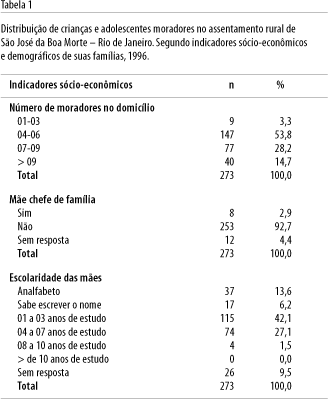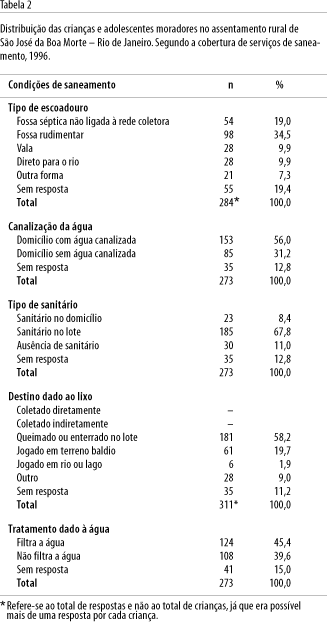This study evaluated socioeconomic indicators and nutritional status in 201 children and adolescents in a rural land settlement in São José da Boa Morte, Rio de Janeiro. Nutritional deficit was defined as a value below -2 z score for the reference median from the National Center for Health Statistics (NCHS) for weight-for-age (W/A) and stature-for-age (S/A) for children under five years of age and weight-for-stature (W/S) and S/A for children from 5.0 to 9.9 years. For adolescents, the study used cut-off points at the 5th percentile (thin) and 85th percentile (overweight) from the distribution of body mass index (BMI) in the Brazilian population. According to the study, 53.8% of the households had 4 to 6 members, 34.5% had rudimentary cesspools, 31.2% had no running water, 11.0% had no bathroom, 58.2% burned or buried their garbage, and 13.6% of the mothers were illiterate. No case of nutritional deficit was found in the 0-4.9 year age bracket, and in the 5-9.9 year bracket there were one underweight and three overweight children. The authors concluded that the low prevalence of nutritional deficits in the study group, despite the exposure to risk factors, may be related to the presence of protective factors like access to health services, and that there was an important rate of overweight among adolescents (13.3%).
Rural Settlements; Nutrition Assessment; Child Health




